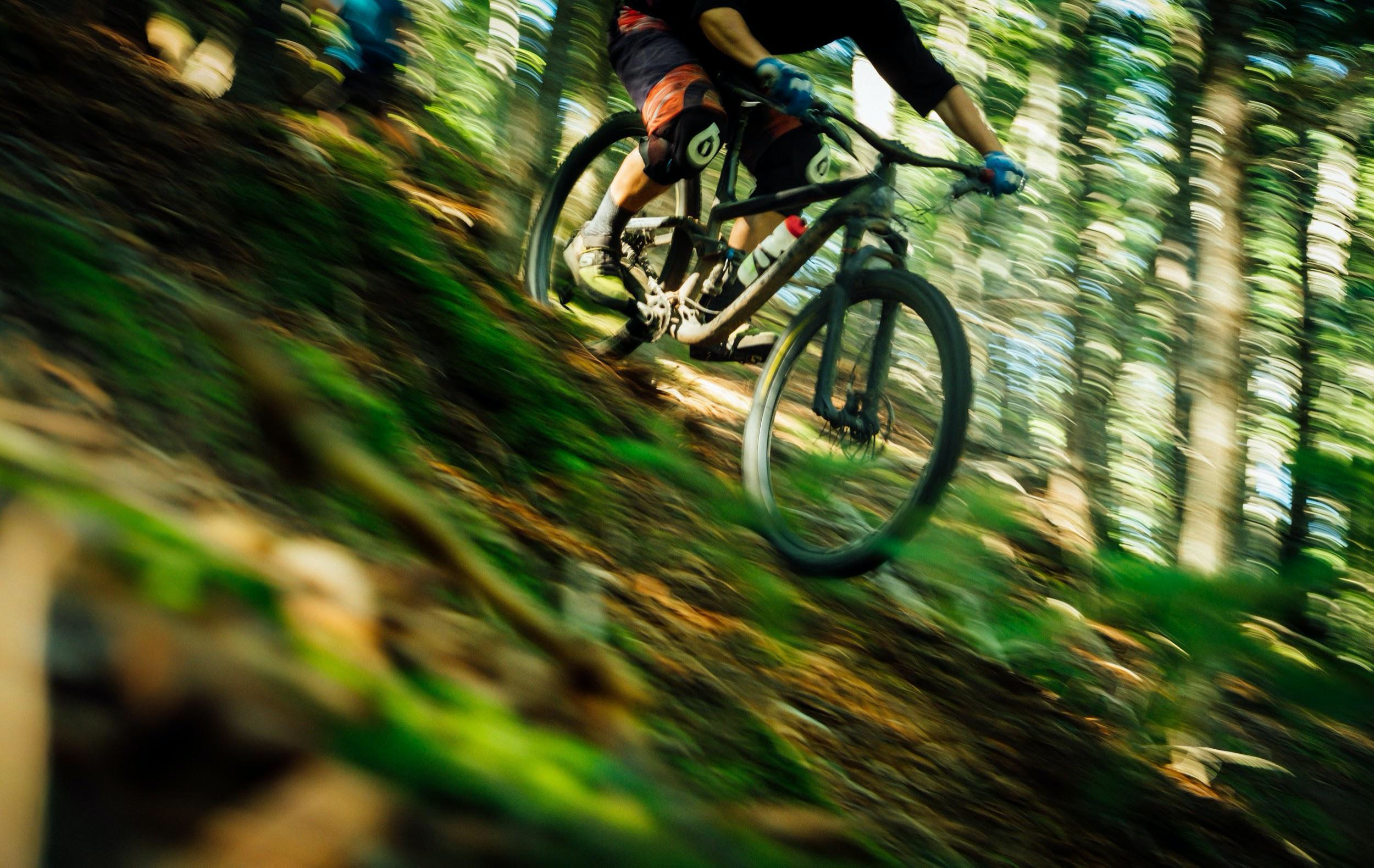
The Mountain Biking Trail that Put This California Town on the Map
In a quiet corner of northern California’s Sierra Nevada Mountains lies a 15-mile bike trail that drops more than 5,000 feet through a lush pine forest with creeks and waterfalls. This is the Downieville Downhill, one of the most highly sought-after mountain bike trails in the West and the centerpiece of the annual Downieville Classic race and festival.
Each August, hundreds of riders make their way to the small town of Downieville (population 282) to challenge their skills on the longest and perhaps most challenging downhill course in the country. Aside from the downhill race, the Downieville Classic Festival also includes a 29-mile cross country race, Ron’s House of Big Air River Jump, a log pull competition, and live music.
Whether you want to compete in the Downieville race, or experience the grin-inducing course with a group of buddies, or just be a witness to the extravaganza known as the Downieville Classic Festival, here’s what you need to know.
So, Where is Downieville Again?
While the downhill race certainly put Downieville on the mountain biking map, the remote town isn’t exactly easy to find on an old-school map. Established during the California Gold Rush, Downieville sits at 3,000 feet of elevation in the heart of Tahoe National Forest along CA-49. It’s about three and a half hours northeast of San Francisco and one and a half hours northwest of Lake Tahoe. Nestled in the foothills of the Sierra Nevada at the confluence of the Downie and North Yuba rivers, Downieville is known as much for its solace and natural beauty as it’s known for the screaming-fast downhill race and the summer festival.
Downieville Downhill Details

The classic Downieville Downhill run starts at Packer Saddle (7,100 feet) and combines four singletrack trails, a short fire road section, and a quick descent on a paved road to finish in Downieville (2,900 feet). The ride is considered intermediate/difficult and beginner riders should not attempt it. The course features sustained rocky segments, creek crossings, tight switchbacks, smooth singletrack portions and, of course, one insanely long and fast downhill experience. Intermediate riders will likely face some hike-a-biking in the rocky technical sections.
The descent starts on the Sunrise Trail, which warms up riders with two miles of narrow flow trail full of dips, banked turns, and a bit of uphill riding. Sunrise leads directly to the Butcher Ranch Trail, which earned Downieville its fame in the biking community. Butcher Ranch starts off with swift, steep doubletrack for about a mile before turning to rocky, technical singletrack that challenged riders with compact turns, G-outs, and splashy creek crossings. The trail then climbs about 600 feet to the Third Divide Trailhead.
The Third Divide Trail takes the cake as the fastest portion of the ride, dropping more than 1,500 feet in three miles of smooth singletrack paradise. The Third Divide Trail ends at the Lavezzola Creek drainage, where riders continue the non-stop descent on the First Divide Trail, which is known for its potentially hair-raising exposure on some narrow sections with a rock wall on one side and a short cliff drop on the other. At the end of First Divide, you’ll close out the wild ride with a 1.5-mile descent down Main Street into town.
Getting to the Downieville Trailhead
Running a shuttle with two cars—one at the trailhead at Packer Saddle and one at the end in Downieville—is essential. To save time and hassle, most riders opt for the shuttle van services available in town from Yuba Expeditions or Downieville Outfitters. Shuttles are available every day (with a four-person minimum), and reservations are highly recommended. The drive from town up to the trailhead takes about 45 minutes.
Essential Gear for the Downieville Downhill

A full-suspension mountain bike with 140mm to 160mm of travel is a must for the Downieville Downhill, while a modern, high-spec enduro bike can afford an even fuller range of fun and confidence on the trail. Yuba Expeditions and Downieville Outfitters offer top-of-the-line enduro bikes to rent or demo (reservations recommended) if your current setup leaves something to be desired. Yuba Expeditions also features a full bike shop with certified mechanics for pre- or post-ride repairs.
On the trail, the usual arsenal of mid-ride bike repair equipment and knowledge can prove essential, as road rescue isn’t really a convenient option, and the rocky terrain is known for puncturing tubes. Knee and elbow pads aren’t a bad idea, nor are a few extra layers for colder temperatures at the summit (we’re talking 7,100 feet, after all).
More Downieville Race and Festival Details
Each year at the beginning of August, mountain bike enthusiasts and racers descend upon the tiny town of Downieville for four days of unparalleled merriment and the Downieville All-Mountain World Championship race, which includes the world-famous downhill. The All-Mountain World Championship is comprised of two stages that riders must tackle over two days on the same bike without switching parts.
The Classic Cross Country stage features 29 miles of point-to-point racing from Sierra City to Downieville on rugged, technical trails that highlight the natural splendor of the Sierra Nevada. The following day, racers tackle the Downieville Downhill stage as described here. Racer categories are split by gender and age, with extremely limited registration. (The All-Mountain World Championship regularly sells out within seconds.)
Even if you’re not participating in the race, you’ll be plenty entertained by the festival’s four full days of unadulterated partying, food, live music, demos, and wildly-amusing competitions, like launching tricks off a bike ramp into the river. Plus, you can take advantage of shuttle rides to trails in the area. All proceeds from the race and festival support the Sierra Buttes Trail Stewardship in their steadfast trail building, maintenance, and clean-up efforts that promote protection and enjoyment of the mountains.